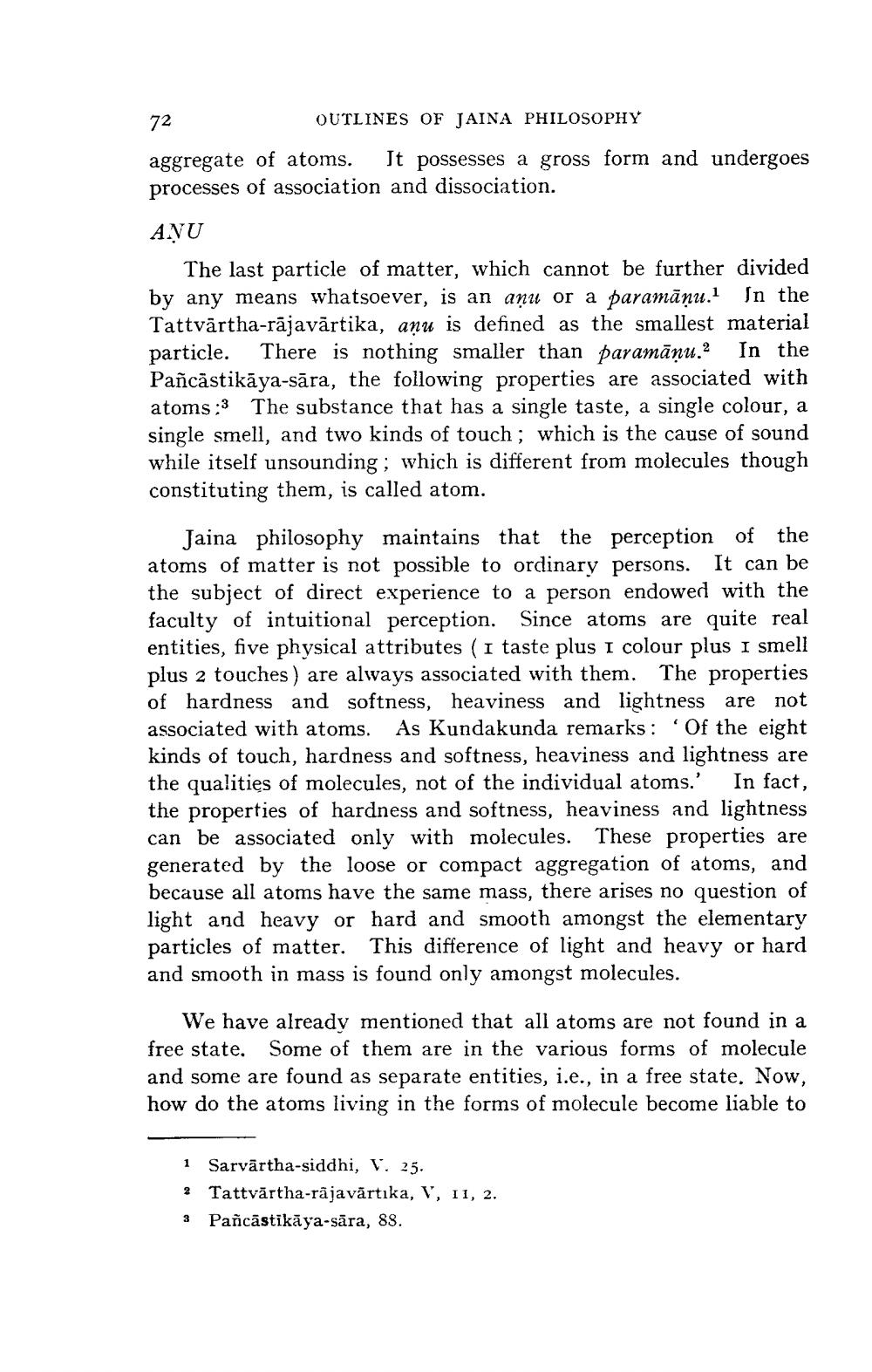________________
OUTLINES OF JAINA PHILOSOPHY
aggregate of atoms. It possesses a gross form and undergoes processes of association and dissociation.
72
ANU
The last particle of matter, which cannot be further divided by any means whatsoever, is an anu or a paramāņu.1 In the Tattvärtha-rajavārtika, anu is defined as the smallest material particle. There is nothing smaller than paramānu.2 In the Pañcastikāya-sara, the following properties are associated with atoms:3 The substance that has a single taste, a single colour, a single smell, and two kinds of touch; which is the cause of sound while itself unsounding; which is different from molecules though constituting them, is called atom.
Jaina philosophy maintains that the perception of the atoms of matter is not possible to ordinary persons. It can be the subject of direct experience to a person endowed with the faculty of intuitional perception. Since atoms are quite real entities, five physical attributes (I taste plus I colour plus I smell plus 2 touches) are always associated with them. The properties of hardness and softness, heaviness and lightness are not associated with atoms. As Kundakunda remarks: Of the eight kinds of touch, hardness and softness, heaviness and lightness are the qualities of molecules, not of the individual atoms.' In fact, the properties of hardness and softness, heaviness and lightness can be associated only with molecules. These properties are generated by the loose or compact aggregation of atoms, and because all atoms have the same mass, there arises no question of light and heavy or hard and smooth amongst the elementary particles of matter. This difference of light and heavy or hard and smooth in mass is found only amongst molecules.
We have already mentioned that all atoms are not found in a free state. Some of them are in the various forms of molecule and some are found as separate entities, i.e., in a free state. Now, how do the atoms living in the forms of molecule become liable to
1 Sarvärtha-siddhi, V. 25.
2 Tattvärtha-rajavārtika, V, 11, 2.
3 Pañcāstikaya-sāra, 88.




